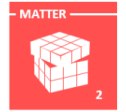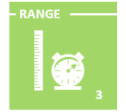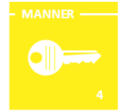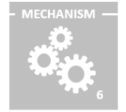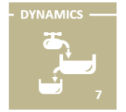Domains - ¨Business Locus¨ 
(The external scope)

The Domains: where the organization positions itself in the business environment where it operates.
Defining the Domains of the Business Activity is defining the "Business Locus": determining the Organization's position in the Value Network in terms of:
- Needs of Targets (that the organization tries to fulfill),
- Budgets of Customers (that the organization tries to capture),
- Benefits from Sources (that the organization tries to acquire),
- Infrastructure for the Organization (that it tries to build and maintain internally).

Domains are associated with each Super-Process, and can therefore be split in 3 categories:
- Market Domain: Positioning on Needs
- Capture Domain: Positioning on Budgets and Benefits
- Industry Domain: Positioning on Infrastructure
(click on the following elements for more details)
> Market Domain
(Positioning on Needs)
The Market Domain is defined by the relevant needs that the organization aims at fulfilling, for specific targets.

The "relevant" needs are the Targets' needs whose fulfillment is the fundamental cause for the transaction (needs may relate to different stages such as awareness, seeking, tryout, purchase, use, maintenance, repair, disposal, resell...).
Defining the relevant needs is important because it also defines the nature of competition for the Market Super-Processes. To take a usual example: the relevant need that Rolex is fulfilling is not the need to have the time, but it may be the need for social status (among others). Actually, needs are often more emotional and less functional than we think. Especially in the case of powerful brands.
There are different ways to address the needs: focusing on one type of needs and one specific target segment, one type of needs for different target segments, different types of needs for one specific target segment, or a range of different target segments and needs. In this last case, the organization can be considered as acting in several Market Domains. In most cases can be recognized a "Core" Market Domain and several "Peripheral" Market Domains.
Deep understanding of the Market Domain requires analysis of the inter-relations inside the "Target Triplet": Value Propositions / Needs / Targets:
> Capture Domain
(Positioning on Budgets & Benefits)
CAPTURE ON CUSTOMERS' SIDE:
On customers' side, the Capture Domain is defined by the relevant budgets that the organization aims at capturing, at least partially, from specific customers.

The "relevant" budgets consist in the available amount of money from customers regarding the type of transaction.
Defining the relevant budgets is important because it also defines the nature of competition for the Capture Super-Process on Customers' side. It may not always be straight-forward, as it may not be clearly defined or be directly related to the specific goods or services that are provided. For instance, when Groupon sells a shiatsu session to a customer, is the budget the amount of money this individual is ready to spend (consciously or not) for shiatsu sessions? Or for week-end activities? Or for impulsive purchases, whatever the category?
Because the relevant budgets may not be directly linked to the relevant needs, competition for the Market Super-Process may not be the same as competition for the Capture Super-Process. For instance, a pay newspaper and a free newspaper may fulfill similar needs for readers, but their Capture Domains are very different.
Notice that "Customer" is taken in a wide sense, as actor providing cash to the organization. We can split the Capture Domain in 2 on customers' side:
- Income Domain (cash inflow from sales or divestments): payment is received in return for the delivery of goods & services, or long-term assets.
- Financing Domain (cash inflow increasing financing): payment is received in return for the issuance of securities (debt or shares).
Example 1: During a sport event, like a baseball game, tickets are sold to individuals, families, or companies. For a family, the price of the ticket is often just half of what they spend for the game, as they are willing to buy food, drinks, programs, caps etc. The Capture Domain for such sport events may therefore be considered as the entire family budget for going out to see the game. For that reason, organizers actually find ways to capture most of this budget, by selling themselves food and drinks (or by charging the booths selling food or drinks during the event). The organizers may as well think about ways to charge the public transportation system for the extra income they provide, to benefit even more from their Capture Domain.
Example 2: Ryanair often allows people to travel to locations that are not well served by other airlines. By doing so, it captures part of the budget people consider for their trip. But the local economy also benefits from this available money that people will spend on airport facilities, hotels, restaurants, touristic attractions, etc. Ryanair found a way to indirectly capture a larger part of this budget by charging the local administration for bringing tourists in the area. Another way to see this is to consider two sides for the Capture Domain: one for tourists and one for local administrations. The later domain may consist in the administration's available budget for local commerce enhancement.
Deep understanding of the Capture Domain (Customers' Side) requires analysis of the inter-relations inside the "Customer Triplet": Customers / Budgets / Revenues:
CAPTURE ON SOURCES' SIDE:
On Sources' side, the Capture Domain is defined by the relevant benefits that the organization is willing to acquire for its operations.

The "relevant" benefits are the benefits the organization finds in the supplies for its operations that are the fundamental reasons for the transaction with Sources.
Defining relevant benefits is important because it can help defining the nature of competition for the Capture Super-Process on Sources' side. It can also help rationalizing the sourcing process.
Notice that "Source" is taken in wide sense, as actor providing non-cash value to the organization. We can split the Capture Domain in 3 on sources' side:
- Operational Domain (supply of goods or services, including assets)
- Financing Domain (supply of securities, or rights associated with bonds or equity purchased by the organization)
- Labor Domain (contracting with workers)
Example: Facebook delivers a service to its website users. In return, the users provide valuable information about themselves and about their links with other users. Therefore, an important Capture Domain for Facebook, regarding users, is the amount of potential information they have about themselves and their "friends".
Deep understanding of the Capture Domain (Sources' Side) requires analysis of the inter-relations inside the "Source Triplet": Sources / Supplies / Benefits:
> Industry Domain
(Positioning on Infrastructure)
The Industry Domain is defined by the relevant infrastructure needed by the Organization for its operations.

The "relevant" infrastructure is the set or resources that allows the organization to perform its current or future operations.
Defining the relevant infrastructure is important in two different ways:
- by setting necessary conditions: the minimum ammount of resources (in terms of quality and/or quantity) that the organization needs to integrate if it wants to run its business,
- by setting sufficient conditions: the ammount of resources (quality and/or quantity) that the organization should not exceed in order to optimize economic efficiency.
Deep understanding of the Industry Domain requires analysis of the inter-relations inside the "Organization Triplet": Resources / Infrastructure / Divisions:

Nature < PREVIOUS - NEXT > Processes

